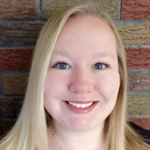TransUnion Chief Information and Technology Officer Mohit Kapoor launched Project Spark – an IT program designed to revolutionize the way the global risk and information solutions provider used big data. His IT team did this for a company with more than 50 petabytes of data housed in more than 30 data centers worldwide.

Kapoor recently won the Global CIO of the Year award from the Chicago CIO Leadership Association. We asked him to share more about TransUnion’s transformation into a leading analytics and insights organization and his approach to overcoming resistance to cultural changes.
The Enterprise Project (TEP): TransUnion (TU) has transformed from a credit bureau to a global intelligent analytics and insights organization with the help of the technology organization and your leadership as CIO. What projects made this possible?

Kapoor: There was a lot going on around strategy, turning ourselves into a high-growth company, and around branding. Project Spark, part of the overall TU transformation, was the major thing that needed to happen in order to allow a lot of the other elements to be meaningful.
The goal of Spark was to help us move from being simply a credit bureau and a data-centric company to having a new set of capabilities to drive more insights across multiple data sets, whether they were credit or non-credit related (such as drivers history, public records, healthcare, etc).
[Want more wisdom from Chicago CIO Leadership association award winners? See our related article, United Airlines CDO: Innovation lessons from a mobile transformation.]
Spark had three main areas of focus. The first was organization and culture within technology. Everything had been fragmented; we wanted a much more holistic model that was enterprise-wide and this became the foundation for our culture of innovation. The second major area focused on how we conduct our work. We became absolutely disciplined and ruthless about having consistency within a technology stack. At the same time, we moved from giant, waterfall projects to a more agile method and projects that were smaller and more tangible.
The third area was about the technology capabilities and environment that we operate in. We took what was a legacy set of applications that were running on the mainframe that ran the core of our business to a much more contemporary, big data technology that is purpose-built for dealing with large data sets – on a much more scalable platform.
In addition to the culture being much more innovative, agile, and responsive, it’s also much easier to operate because of the convergence of infrastructure and the tools that we have to deal with the reality of plentiful, high-velocity data. It was about a three-year journey, and our capabilities are significantly better now. We’re running a business that is 30 to 40 percent bigger today at a cost that is about 20 to 25 percent lower.
There are very few companies who move from saying “We are going to be technology-led” to actually doing it.
TEP: Why is it hard for companies to make that leap from saying to doing?
Kapoor: If it was easy, everyone would do it. You may have some hiccups that cause some interruptions or disruptions to your existing product. It’s very easy to give up because the resolve starts to disappear when there’s pressure to make certain goals. The short-term gain takes over and you’re no longer thinking, “Hey, the outcome at the end is worth the pain we’re going through now.”
There are many companies who start the journey with a lot of energy and commitment but end up halfway through thinking it’s too difficult. They're stuck with a hybrid that’s part of the new world and part of the old world. That’s sometimes even more challenging than what they started out with.
TEP: Describe TransUnion’s Shared Analytical Processing Environment, SHAPE. How did it impact the relationship between IT and other parts of the business?
Kapoor: Before, even for the data sets we had in the core business we used to run, we would only give people 10 percent of the data in an environment that was relatively constrained, and with tools that were more traditional. If you wanted additional data, it took a long time to get it.
Today, 100 percent of the data is available in the analytics environment. We have contemporary tools that enable really fast analysis. What analysts used to be able to do in a 10- to 12-week period they can now sometimes do in a matter of days, hours, or even minutes.
We also separated product development from bringing data into the enterprise. Before, the data that was brought in was contingent on the revenue it would generate. Today, there isn’t that contingency. If you find insight, great – and if not, then let’s get the next data set and see what we can find.
And finally, because we separated analytics from product silos, the data we bring in is now open and available to every analyst who wants to look at it. We have much richer data sets available to them because the data is centralized and separated from the delivery of products.
All this has changed the thinking from complaining about our ability to give more data to, “Hey, what else can we do around this?” It’s a lot more forward-thinking.
TEP: What were some of the cultural challenges you faced and how did you overcome them during this transformation?
Kapoor: It’s one thing to say that we want to collaborate, but it’s another to put the foundational tools and capabilities in place so people can actually do it. So we said, “Look, we’re going to connect the entire enterprise through unified communications, whether it’s IM, voice, video, desktop share, etc. – in a way that allows people to have a high-quality experience.” When the tools are in place, then you change the culture. And that took a leap of faith.
A lot of it happened through leading-by-example. You have to celebrate the people who are using these tools; you have to keep talking about them and evangelizing it. You need to showcase people who have had tangible, positive business results and experience as a result of collaboration. The journey is by no means complete, but I feel like we’ve progressed significantly.





